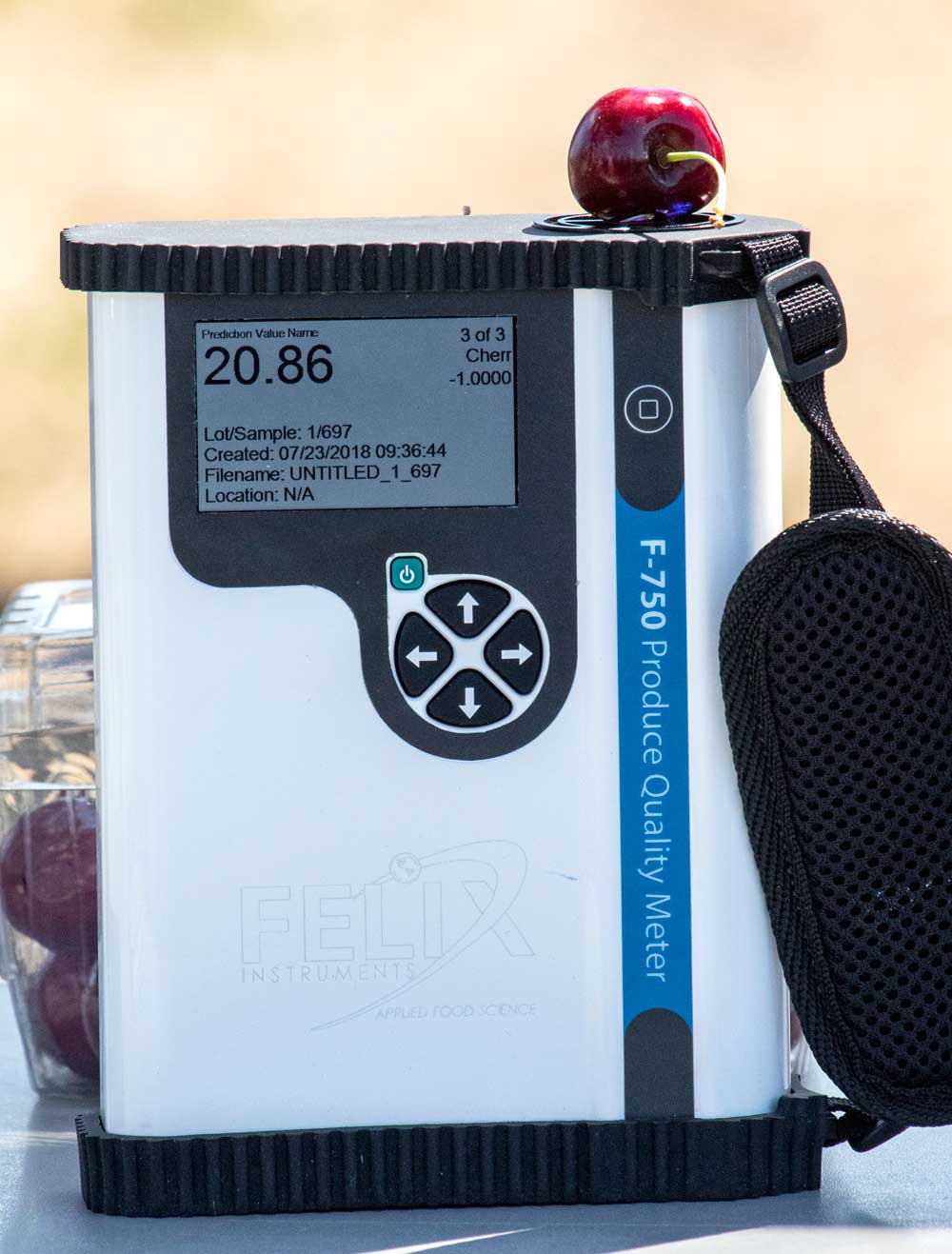
A cherry rests atop a spectrometer, which measures light absorption as a way to indicate the level of soluble solids and other factors in determining fruit maturity. (TJ Mullinax/Good Fruit Grower)
With cherries, color is not everything.
Development of soluble solids, dry matter and sugars — all indicators of a cherry’s eating quality — also determine when that fruit is ripe.
“Like in apples, red doesn’t always mean mature,” said Peter Toivonen, a research scientist for Agri-Food Canada’s Summerland Research and Development Centre in British Columbia. “That’s what we’re beginning to find.”
Toivonen is experimenting with using a spectrometer as a nondestructive method to measure soluble solids in a cherry in hopes of giving growers a way besides color to determine when to pick.
Some growers now use a DA meter, which measures the difference between light wavelengths that go out and the wavelengths that return to quantify the amount of anthocyanins, the flavonoids that give cherries their red color. Apple growers sometimes use DA meters, too.
But Toivonen wants to add the use of a spectrometer, which measures “light absorption at different wave lengths,” to measure soluble solids in cherries and combine the two measurements into a cohesive model.
“We need to synchronize color development with soluble solids, in other words eating quality with the cherry,” he said. “They have to come hand in hand.”
The project, funded both by the BC Fruit Growers Association and the Canadian federal government, is still in its infancy, he said.
Hopefully, the hand-held spectrometers also will help growers adjust their horticultural practices to make maturity more consistent. For example, in a trial in one orchard that he considered well managed, the difference in soluble solids throughout the blocks was about only 1 percent. In a less well-managed orchard, the difference was 7 percent.
Mango growers in Australia are using spectrometers commercially now. Cherry growers are just getting started, most likely doing their own trials, Toivonen said. For example, manufacturer Felix Instruments has told him an Oregon cherry grower has purchased the same unit he has — the F-750 — and found his model useful so far. He doesn’t know which grower it is.
“That’s their own private research,” he said. •
—by Ross Courtney






Leave A Comment